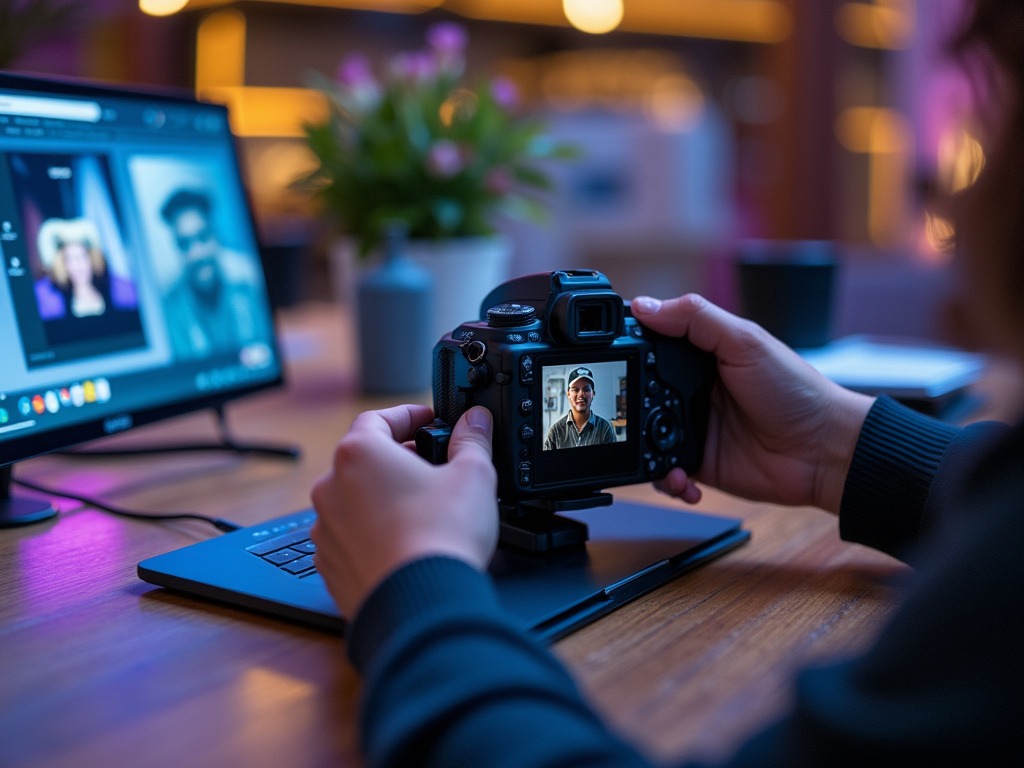In today’s competitive marketplace, startups need innovative strategies to stand out and connect with their target audience. One powerful approach is implementing a Brand Ambassador Program. This comprehensive guide will walk you through creating an effective Brand Ambassador Program tailored to your startup’s needs, leveraging the most relevant strategies, tools, and best practices to boost your startup’s reach and drive sustainable growth.
Key Takeaways:
- Understand the fundamentals and benefits of a Brand Ambassador Program for startups.
- Learn effective strategies for recruiting, training, and managing brand ambassadors.
- Discover how to leverage social media and influencer marketing to enhance brand advocacy.
- Explore metrics and tools to measure the success and ROI of your ambassador program.
- Gain insights from real-life examples and best practices to implement a successful program.
Section 1: Introduction to Brand Ambassador Programs
What is a Brand Ambassador Program and Why It Matters for Startups
Defining Brand Ambassadors and Their Role in Marketing
A Brand Ambassador Program involves enlisting enthusiastic individuals who genuinely believe in your brand to represent and promote it. These ambassadors act as brand advocates, leveraging their personal networks and social media presence to enhance your startup’s brand awareness and visibility. Unlike traditional marketing, brand ambassadors offer authentic advocacy that resonates more deeply with potential customers.
The Importance of Brand Advocacy for Startup Growth
For startups, building trust and credibility is crucial. Brand advocacy through ambassadors fosters customer engagement and loyalty, essential elements for driving growth. Ambassadors help in creating user-generated content, providing social proof, and amplifying your brand messaging across various channels, thereby increasing your brand equity and reputation.
Section 2: Benefits of a Brand Ambassador Program for Startups
Key Advantages of Implementing a Brand Ambassador Strategy
Enhancing Brand Awareness and Visibility
A well-executed brand ambassador strategy significantly boosts brand visibility. Ambassadors utilize their social media platforms to share your brand’s story, reaching diverse audiences that might be challenging to engage through conventional marketing channels.
Building Trust and Credibility Through Authentic Advocacy
Consumers trust recommendations from individuals they relate to. Authentic advocacy from brand ambassadors builds trust and credibility, making your startup more approachable and reliable in the eyes of potential customers.
Driving Customer Engagement and Loyalty
Ambassadors actively engage with your brand, fostering a sense of community and loyalty. This customer engagement translates into repeat business and word-of-mouth referrals, essential for the sustained growth of your startup.

Section 3: Developing a Brand Ambassador Strategy
Crafting an Effective Brand Ambassador Strategy for Your Startup
Aligning Ambassador Goals with Business Objectives
To create a successful brand ambassador strategy, align the goals of your ambassadors with your startup’s business objectives. Whether it’s increasing brand awareness, driving sales, or enhancing customer retention, clear alignment ensures that ambassadors contribute effectively to your overall strategy.
Identifying Your Target Audience and Ideal Ambassadors
Identify your target audience and the characteristics of your ideal ambassadors. Consider factors like demographics, interests, and social media presence to select ambassadors who can authentically connect with your audience and represent your brand values.
Setting Clear Objectives and KPIs for Your Program
Define clear objectives and KPIs to measure the success of your Brand Ambassador Program. Metrics such as engagement rates, customer acquisition, social media growth, and ROI will help you assess the effectiveness of your program and make necessary adjustments.
Section 4: Recruiting the Right Brand Ambassadors
How to Recruit Brand Ambassadors for Your Startup
Criteria for Selecting Effective Brand Ambassadors
Establish criteria for selecting effective brand ambassadors. Look for individuals who are passionate about your brand, have a strong online presence, and can create engaging user-generated content. Their ability to authentically advocate for your brand is crucial for the program’s success.
Leveraging Social Media Influencers and Micro-Influencers
Utilize social media influencers and micro-influencers to expand your reach. These influencers have dedicated followings and can provide authentic advocacy that resonates with their audience, making them valuable assets to your Brand Ambassador Program.
Utilizing Influencer Marketing Platforms for Recruitment
Influencer marketing platforms can streamline the recruitment process. These platforms connect startups with potential ambassadors, offering tools for managing relationships, tracking performance, and optimizing your recruitment strategy.

Section 5: Onboarding and Training Brand Ambassadors
Training Your Brand Ambassadors for Maximum Impact
Creating a Comprehensive Brand Ambassador Handbook
Develop a brand ambassador handbook that outlines your startup’s mission, values, and brand messaging. This handbook serves as a guide for ambassadors, ensuring consistency and clarity in their advocacy efforts.
Developing Training Programs and Resources
Implement training programs and resources to equip your ambassadors with the necessary skills and knowledge. Training should cover effective content marketing, social media strategies, and guidelines for maintaining brand consistency.
Ensuring Brand Consistency and Messaging
Maintain brand consistency by providing clear guidelines on how ambassadors should represent your brand. Consistent messaging across all platforms reinforces your brand identity and ensures that ambassadors effectively communicate your value proposition.
Section 6: Managing and Engaging Your Brand Ambassadors
Best Practices for Managing Brand Ambassador Programs
Utilizing Ambassador Program Software and Management Tools
Invest in ambassador program software and management tools to streamline the administration of your program. These tools help in tracking performance, managing communications, and automating tasks, allowing you to focus on strategic growth.
Fostering Continuous Engagement and Communication
Maintain regular engagement and communication with your ambassadors through newsletters, meetings, and feedback sessions. Continuous interaction keeps ambassadors motivated and aligned with your brand advocacy goals.
Implementing Incentive Structures and Rewards
Create effective incentive structures and rewards to motivate your ambassadors. Offer both monetary and non-monetary rewards, such as exclusive products, experiences, or recognition, to keep ambassadors engaged and committed to your brand.

Section 7: Creating Compelling Content for Brand Ambassadors
Developing Engaging Content for Your Brand Ambassador Campaign
Strategies for User-Generated Content and Social Proof
Encourage ambassadors to create user-generated content that showcases their authentic experiences with your brand. This content serves as social proof, enhancing your startup’s credibility and attracting new customers.
Leveraging Content Marketing to Support Ambassadors
Integrate content marketing strategies to support your ambassadors. Provide them with resources, such as blog posts, videos, and graphics, to ensure they have the necessary tools to create high-quality, engaging content.
Personalizing Brand Interactions and Messaging
Allow ambassadors to personalize brand interactions and messaging. Personalized content resonates more with their audience, fostering deeper connections and more effective brand advocacy.
Section 8: Leveraging Social Media for Brand Ambassador Outreach
Using Social Media to Expand Your Brand Ambassador Reach
Effective Social Media Strategies for Brand Advocacy
Implement effective social media strategies that empower your ambassadors to share your brand’s story across various platforms. Utilize platforms like Instagram, Twitter, Facebook, and LinkedIn to maximize your brand’s online presence.
Harnessing the Power of Social Media Influencers
Collaborate with social media influencers to amplify your brand’s reach. Influencers can create engaging content that highlights your brand’s unique selling points, attracting their followers to your startup.
Building a Strong Online Presence Through Ambassadors
Use ambassadors to build a strong online presence by consistently sharing content, engaging with followers, and participating in online communities. A robust online presence enhances your brand visibility and attracts potential customers.

Section 9: Measuring the Success of Your Brand Ambassador Program
Key Metrics to Track in Your Brand Ambassador Program
Engagement Metrics and Customer Retention Rates
Track engagement metrics such as likes, shares, comments, and follower growth to gauge the effectiveness of your ambassadors. Additionally, monitor customer retention rates to assess how well ambassadors are contributing to long-term customer loyalty.
Analyzing Marketing ROI and Campaign Performance
Evaluate the marketing ROI by comparing the costs of your Brand Ambassador Program against the revenue generated. Assess campaign performance by analyzing key metrics like conversion rates, sales growth, and brand awareness.
Utilizing Analytics Tools to Improve Program Effectiveness
Leverage analytics tools to gain insights into your program’s performance. Tools like Google Analytics, social media analytics, and ambassador program software provide data that can help you optimize your strategy for better results.
Section 10: Incentivizing Your Brand Ambassadors
Effective Incentive Ideas for Brand Ambassadors in Startups
Offering Monetary and Non-Monetary Rewards
Provide a mix of monetary and non-monetary rewards to keep your ambassadors motivated. Monetary incentives can include commissions or bonuses, while non-monetary rewards might involve exclusive access to products, events, or special recognition.
Creating Exclusive Opportunities and Experiences
Offer ambassadors exclusive opportunities and experiences such as behind-the-scenes tours, early access to new products, or invitations to special events. These experiences make ambassadors feel valued and deepen their connection to your brand.
Developing a Reward System Aligned with Ambassador Goals
Design a reward system that aligns with your ambassadors’ goals and your startup’s objectives. Whether it’s based on performance metrics like sales targets or engagement levels, a well-structured reward system encourages ambassadors to strive for excellence.

Section 11: Overcoming Challenges in Brand Ambassador Programs
Common Challenges and How to Overcome Them in Brand Ambassador Programs
Maintaining Authenticity and Trust
One of the primary challenges in running a Brand Ambassador Program is maintaining authenticity and trust. Ambassadors must genuinely believe in your brand to provide credible advocacy. To overcome this, carefully select ambassadors who align with your brand values and ensure they have a genuine connection with your products or services. Providing thorough training and clear guidelines can help maintain consistency and authenticity in their messaging.
Managing Ambassador Expectations and Performance
Managing ambassador expectations and performance is crucial for the success of your program. Clearly communicate the roles, responsibilities, and expectations from the outset. Regular check-ins and feedback sessions can help address any issues early on and ensure that ambassadors are meeting performance standards. Setting realistic goals and providing ongoing support will keep ambassadors motivated and aligned with your business objectives.
Addressing Legal and Ethical Considerations
Navigating the legal and ethical considerations of a Brand Ambassador Program is essential to avoid potential pitfalls. Ensure that all agreements with ambassadors comply with relevant advertising laws and regulations, including disclosure requirements for sponsored content. Establishing clear contracts and guidelines helps protect both your startup and the ambassadors, fostering a transparent and trustworthy relationship.
Section 12: Scaling Your Brand Ambassador Program
Strategies for Scaling Your Brand Ambassador Program as Your Startup Grows
Expanding Your Ambassador Network Efficiently
As your startup grows, expanding your ambassador network efficiently becomes essential. Utilize influencer marketing platforms and leverage data from your initial program to identify potential ambassadors who can help scale your efforts. Streamlining the recruitment process with automated tools ensures you can manage a larger network without compromising on quality.
Integrating Ambassadors into Larger Marketing Campaigns
Integrate your ambassadors into larger marketing campaigns to maximize their impact. Coordinating their efforts with your overall marketing strategy ensures a cohesive approach, enhancing the effectiveness of both your Brand Ambassador Program and your broader marketing initiatives.
Adapting Your Strategy to Meet Growing Demands
As your startup evolves, so should your Brand Ambassador Program. Continuously assess and adapt your strategy to meet growing demands and changing market conditions. This may involve diversifying your ambassador roles, exploring new social media platforms, or incorporating advanced marketing automation tools to streamline operations.

Section 13: Case Studies of Successful Brand Ambassador Programs
Real-Life Examples of Effective Brand Ambassador Programs
Case Study 1: Glossier’s Ambassador Success Story
Glossier, a beauty startup, effectively leveraged its Brand Ambassador Program to build a loyal customer base. By empowering everyday users to share their authentic experiences, Glossier created a strong brand community that drove significant brand advocacy and customer engagement. Their ambassadors, known as “Glossier Rep,” received exclusive products and experiences, fostering deep connections with the brand.
Case Study 2: Airbnb’s Influencer Partnerships
Airbnb partnered with social media influencers to expand its global reach. By collaborating with micro-influencers who shared their unique travel experiences, Airbnb enhanced its brand visibility and attracted a diverse audience. This strategy not only increased bookings but also strengthened Airbnb’s brand reputation through authentic and relatable content.
Lessons Learned from Top Brand Ambassador Campaigns
Successful Brand Ambassador Programs share common elements such as clear objectives, authentic advocacy, and robust management tools. Key lessons include the importance of selecting the right ambassadors, maintaining consistent communication, and leveraging data to continuously optimize the program. These insights can help your startup design a program that effectively boosts reach and drives growth.
Section 14: Tools and Software for Managing Brand Ambassador Programs
Top Tools and Software to Streamline Your Brand Ambassador Program
Overview of Popular Ambassador Program Management Tools
Several tools can help manage your Brand Ambassador Program efficiently. Ambassador Program Software like AspireIQ, Traackr, and Influitive offer features such as influencer recruitment, performance tracking, and content management, simplifying the administration of your program.
Comparing Features and Pricing of Top Platforms
When selecting the right tool, consider features such as influencer recruitment, performance analytics, social media integration, and customization options. Compare the pricing plans of top platforms to find one that fits your startup’s budget while offering the necessary functionalities to support your program’s growth.
Selecting the Right Software for Your Startup’s Needs
Choose a tool that aligns with your specific requirements. For instance, if your focus is on micro-influencers, a platform with advanced filtering and targeting capabilities might be ideal. Ensure the software you select offers scalability, robust analytics tools, and seamless integration with your existing marketing automation tools to support your evolving needs.

Section 15: Future Trends in Brand Ambassador Marketing
Emerging Trends in Brand Ambassador Programs for Startups
The Rise of Micro-Influencers and Nano-Influencers
The trend towards micro-influencers and nano-influencers continues to grow as brands recognize their value in providing authentic advocacy. These influencers typically have smaller but highly engaged audiences, making their endorsements more credible and effective in driving customer engagement and brand loyalty.
Incorporating AI and Automation in Ambassador Management
Artificial Intelligence (AI) and automation are transforming Brand Ambassador Programs by enhancing program management and performance tracking. AI-powered tools can streamline the recruitment process, personalize communication, and provide deeper insights into ambassador performance, allowing for more strategic decision-making.
The Growing Importance of Video Content and Live Streaming
Video content and live streaming are becoming increasingly important in Brand Ambassador Marketing. Ambassadors who create engaging video content can effectively showcase your brand’s personality and values, fostering deeper connections with the audience. Live streaming events, product launches, and behind-the-scenes content are powerful ways to enhance brand visibility and customer engagement.
FAQ:
Frequently Asked Questions About Brand Ambassador Programs
1. What is the difference between a brand ambassador and an influencer?
A brand ambassador is typically a long-term advocate who genuinely believes in the brand and consistently promotes it, while an influencer may engage in shorter-term partnerships focused on specific campaigns or promotions.
2. How do I measure the ROI of my brand ambassador program?
Measure ROI by tracking metrics such as engagement rates, customer acquisition, sales growth, and brand awareness. Use analytics tools to assess the effectiveness of your ambassadors and calculate the return on your investment.
3. What are the best incentives to offer brand ambassadors?
Effective incentives include a mix of monetary rewards (commissions, bonuses) and non-monetary rewards (exclusive products, experiences, recognition). Align rewards with ambassador goals to maintain motivation and engagement.
4. How can I ensure my brand ambassadors represent my brand authentically?
Select ambassadors who genuinely align with your brand values and provide comprehensive training. Maintain open communication and offer clear guidelines to ensure authentic and consistent brand messaging.
5. What tools can help manage a brand ambassador program effectively?
Tools like AspireIQ, Traackr, and Influitive offer features for influencer recruitment, performance tracking, and content management, streamlining the management of your Brand Ambassador Program.
6. How do I recruit the right brand ambassadors for my startup?
Identify your target audience and select ambassadors who resonate with them. Use influencer marketing platforms and leverage social media influencers to find passionate individuals who can authentically advocate for your brand.
7. What are common challenges in running a brand ambassador program and how to overcome them?
Common challenges include maintaining authenticity, managing expectations, and addressing legal considerations. Overcome these by careful ambassador selection, clear communication, and ensuring compliance with relevant laws.
8. How can I scale my brand ambassador program as my startup grows?
Scale your program by expanding your ambassador network efficiently, integrating ambassadors into larger marketing campaigns, and adapting your strategy to meet increasing demands using marketing automation tools.
9. What metrics should I track to evaluate the success of my ambassador program?
Track engagement metrics (likes, shares, comments), customer retention rates, marketing ROI, and campaign performance to evaluate the success of your Brand Ambassador Program.
10. Can employees be effective brand ambassadors for my startup?
Yes, employees can be highly effective brand ambassadors. They possess in-depth knowledge of your brand and can provide authentic advocacy, enhancing brand credibility and trust among customers.

Table: Comparison of Top Brand Ambassador Program Management Tools
| Feature | AspireIQ | Traackr | Influitive | Ambassador |
|---|---|---|---|---|
| User-Friendly Interface | Yes | Yes | No | Yes |
| Influencer Recruitment | Advanced | Basic | Advanced | Intermediate |
| Performance Analytics | Comprehensive | Limited | Comprehensive | Basic |
| Integration with Social Media | Yes | Yes | No | Yes |
| Pricing Plans | $$ | $ | $$$ | $$ |
| Customer Support | 24/7 Support | Business Hours | Email Only | Live Chat |
| Customization Options | High | Medium | High | Low |
Note: Prices and features are illustrative and should be updated based on current tool offerings.
Conclusion
Implementing a Brand Ambassador Program can significantly amplify your startup’s reach, foster authentic connections with your audience, and drive sustainable growth. By strategically recruiting, training, and managing brand ambassadors, and leveraging the right tools and metrics, your startup can build a loyal community of advocates who champion your brand. Embrace the power of brand advocacy to elevate your marketing efforts, enhance brand visibility, and achieve long-term success.
By following this comprehensive guide and strategically incorporating the identified keywords, your blog post will be well-optimized for SEO, engaging for readers, and effective in boosting your startup’s reach through a robust Brand Ambassador Program.


